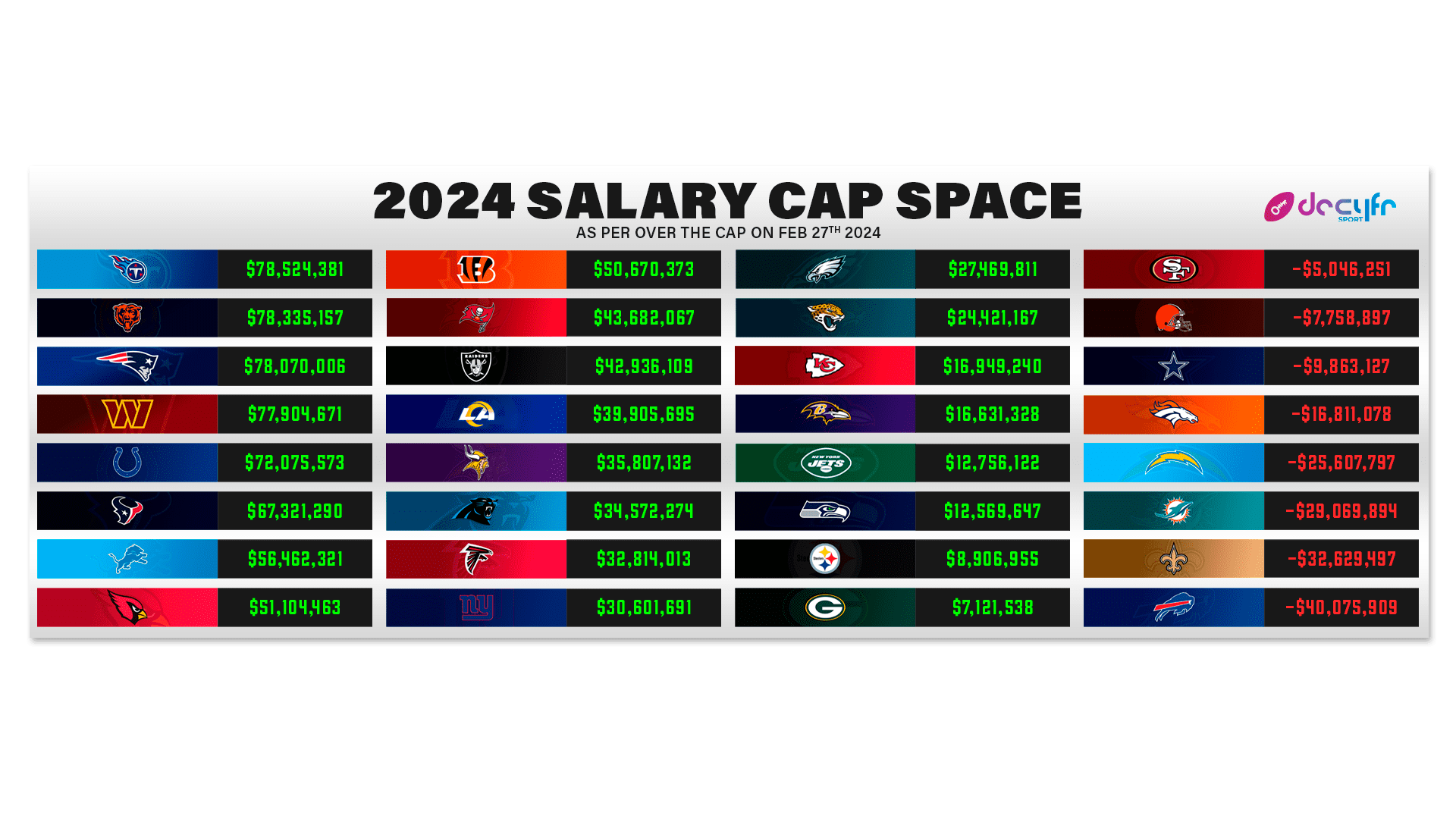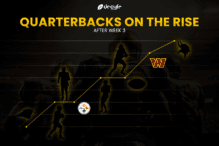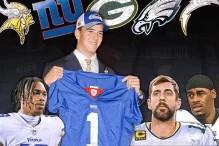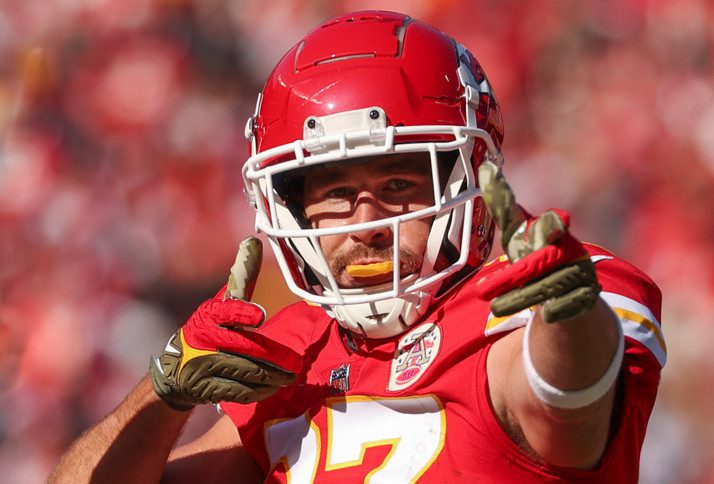

From free agency to the draft, the NFL has always prided itself on its promotion of parity – attempting to ensure that by the time Week 1 of the regular season comes around, all 32 teams have as equal a shot as possible at lifting the Lombardi trophy.
Along with adjusting the draft order and schedule based on a team’s success the previous season, one of the primary tools that the league utilises in pursuit of said parity is the salary cap.
Last Friday, the NFL announced that the 2024 salary cap would sit at $255.4 million – an increase of $30.6 million from last season. As general managers around the league now turn their attention to balancing the books ahead of the new league year on March 13th, we Decyfr what the salary cap is and how it really works.
What is the Salary Cap?
After the introduction of modern free agency in 1993, the NFL deemed it necessary to implement a universal cap that limited the amount of money teams could spend on their rosters – preventing wealthier teams from outspending those from smaller markets and subsequently maximising competitive balance.
In other words, imagine the Premier League if teams like Manchester City were unable to spend a penny more than any other club each season.
Prior to the start of the new league year, the NFL takes a percentage of the revenue generated in the previous season – as agreed by the NFL and the NFL Players Association (NFLPA) in the Collective Bargaining Agreement (CBA). This figure is then divided equally among all 32 teams.
Given the way in which the salary cap is calculated, it is somewhat difficult for teams to accurately predict the figure ahead of time – prompting immediate cuts and restructures as teams attempt to finalise their cap space, and ensure they are under the cap, by 4pm EST on the first day of the new league year.
How is a team’s Salary Cap space calculated?
When a player signs a new contract, the team with whom they have signed will subsequently take on a ‘cap hit’. A player’s ‘cap hit’ is the sum of money owed to them through three main sources – their salary, incentives, and that year’s share of their signing bonus.
By adding together every player’s ‘cap hit’, a team can determine their overall salary cap space for that season – indicating how much capital, if any, they have left to spend on new players via trades and free agency.
However, teams also have to take ‘dead money’ into consideration when calculating their salary cap. ‘Dead money’ is the remaining signing bonus that a team owes to a player who is no longer on their roster – due to the signing bonus being amortised – in other words, spread out over the entire length of the contract.
Put simply, say a player has a $10 million signing bonus on a 5-year contract, they are technically guaranteed $2 million per year. If that player is then cut after their third season, the team will have $4 million worth of ‘dead money’ on their books.
While minimal in this example, ‘dead money’ can provide teams with a host of problems. This season, for example, the Los Angeles Chargers have to work around nearly $25 million worth of ‘dead money’ – particularly pertinent considering they currently sit at nearly $26 million over the cap.
How do teams work around the Salary Cap?
While an impressive system for the most part, the NFL salary cap isn’t without its loopholes – loopholes that teams will commonly exploit using a method known as “Cash over Cap”.
This theory works on player’s taking the majority of their money in the form of a signing bonus rather than a salary – meaning the player gets a massive sum of money upfront and the cap hit from said bonus is spread out over the course of the contract through amortisation.
Former NFL executive Andrew Brandt, in his article for Sports Illustrated, offers Jalen Hurts’ $251 million contract extension with the Philadelphia Eagles in 2023 as an example of this in action.
Brandt explains that while Hurts’ deal would appear to take up an overwhelmingly large portion of Philadelphia’s cap, agreeing to pay Hurts the majority of his money in the form of a signing bonus, ensures that the salary can remain very low. As a result, his cap hit for years one and two is only $6.15 million and $13.5 million respectively – equating to roughly 2.8% and 5.7% of the Eagles’ aforementioned cap.
In the latter stages of the contract, the prorated signing bonus will cause the cap hit to increase considerably. That said, through a combination of “void” and “dummy” years the Eagles could theoretically avoid completely derailing their salary cap for the duration of the contract. These are essentially placeholder years – where the player won’t take to the field – and are used to manage the signing bonus.
As discussed previously, the only thing that would stump this plan is the highly-unlikely scenario where the Eagles decide to cut Hurts – at which point his remaining signing bonus would become ‘dead money’.
While this “Cash over Cap” approach tends to be more appealing to both players and teams, it has divided opinion across the NFL. The necessity of available cash means the method arguably gives teams with richer owners – such as the Denver Broncos and their Walton-Penner ownership group – an unfair advantage, as they can afford to strategically pay massive cheques and subsequently manage that player’s cap hit.
In fact, while on the Pat McAfee show, Brandt referenced some calling for a “Cap on Cash over Cap” to limit this from happening – prompting an argument that if the NFL is serious about competitive balance then the salary cap system – as it stands – could do with a rethink.
This phenomenon, however, is by no means exclusive to the NFL. Yet another example in North America of managing the salary cap was demonstrated by MLB sensation Shohei Ohtani’s mammoth $700 million, 10-year deal with the Los Angeles Dodgers which will see him paid $2 million in annual salary and the remaining $68 million in deferred payments annually.
Whilst no salary cap exists in European soccer leagues, it is rumoured that French superstar Kylian Mbappe will join Spanish giants Real Madrid from Paris Saint-Germain this summer. While costing PSG a reported $217 million per year, Mbappe will take a “pay cut” to join Real Madrid – who while paying him a lower salary, will fork out a staggering $127 million signing bonus, spread over the duration of his contract (as per Sky Sports) – in all likelihood to stay compliant with UEFA’s Financial Fair Play (FFP) regulations.
https://decyfrsport.com/decyfrd-nfl-salary-cap-for-dummies/
Copied!
































































































































